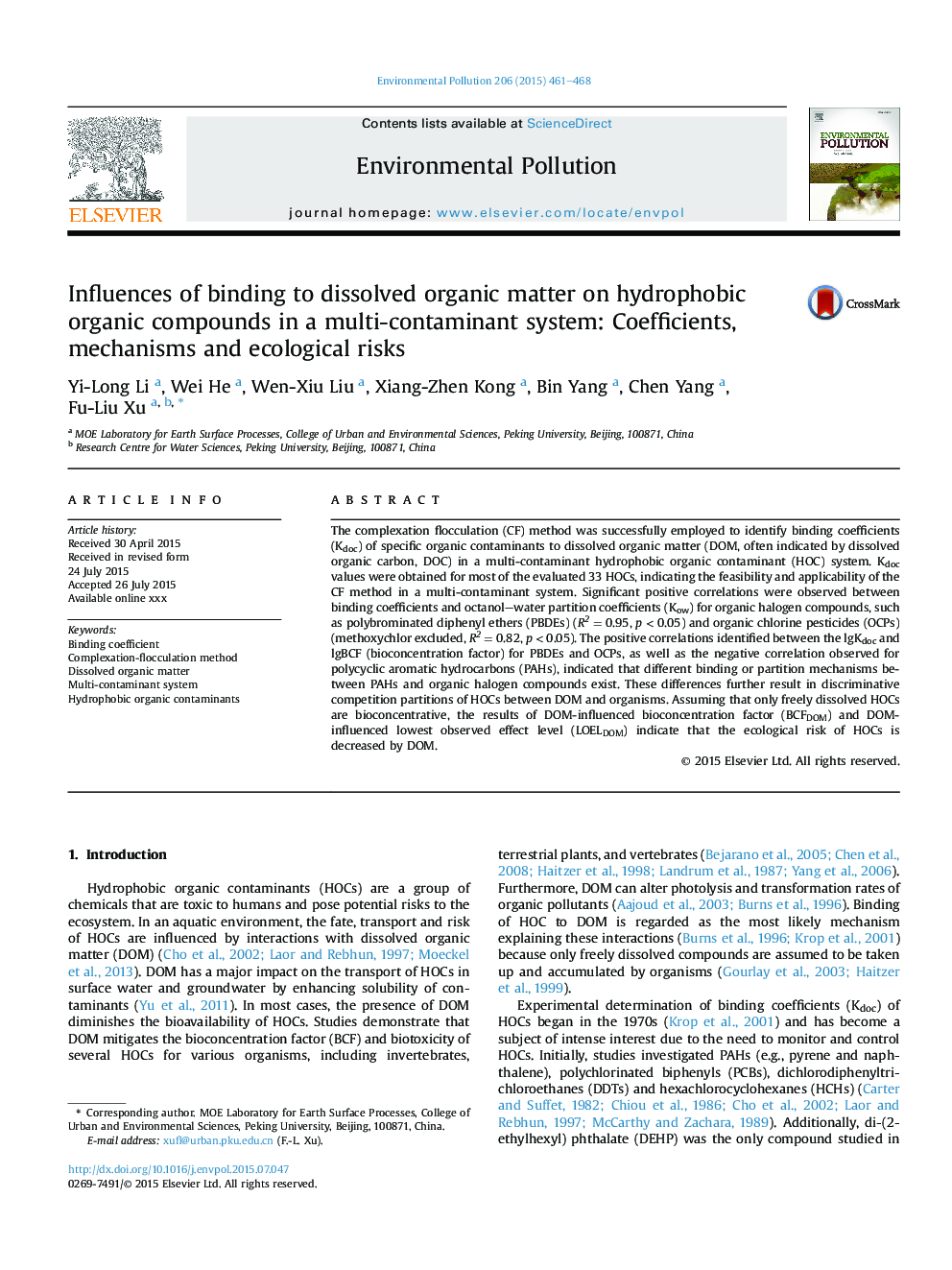| Article ID | Journal | Published Year | Pages | File Type |
|---|---|---|---|---|
| 6316822 | Environmental Pollution | 2015 | 8 Pages |
Abstract
The complexation flocculation (CF) method was successfully employed to identify binding coefficients (Kdoc) of specific organic contaminants to dissolved organic matter (DOM, often indicated by dissolved organic carbon, DOC) in a multi-contaminant hydrophobic organic contaminant (HOC) system. Kdoc values were obtained for most of the evaluated 33 HOCs, indicating the feasibility and applicability of the CF method in a multi-contaminant system. Significant positive correlations were observed between binding coefficients and octanol-water partition coefficients (Kow) for organic halogen compounds, such as polybrominated diphenyl ethers (PBDEs) (R2 = 0.95, p < 0.05) and organic chlorine pesticides (OCPs) (methoxychlor excluded, R2 = 0.82, p < 0.05). The positive correlations identified between the lgKdoc and lgBCF (bioconcentration factor) for PBDEs and OCPs, as well as the negative correlation observed for polycyclic aromatic hydrocarbons (PAHs), indicated that different binding or partition mechanisms between PAHs and organic halogen compounds exist. These differences further result in discriminative competition partitions of HOCs between DOM and organisms. Assuming that only freely dissolved HOCs are bioconcentrative, the results of DOM-influenced bioconcentration factor (BCFDOM) and DOM-influenced lowest observed effect level (LOELDOM) indicate that the ecological risk of HOCs is decreased by DOM.
Related Topics
Life Sciences
Environmental Science
Environmental Chemistry
Authors
Yi-Long Li, Wei He, Wen-Xiu Liu, Xiang-Zhen Kong, Bin Yang, Chen Yang, Fu-Liu Xu,
